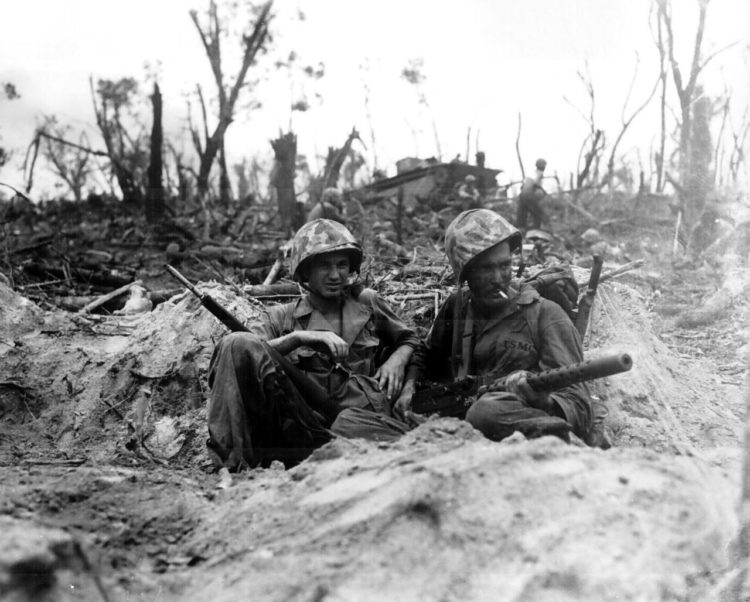Almost 80 years after WWII, a specialized EOD unit from the U.S. Marines have returned to the island of Peleliu, to make it safer. Peleliu, a small island in the archipelago of Palau in modern day Micronesia, was the site of a bloody two-month battle, involving the 1st Marine Division and the Army’s 81st Infantry Division. The 27,000 Americans faced a force of 11,000 Japanese soldiers, who had entrenched themselves into the island with no intention of losing or surrendering. The Japanese had nicknamed the island the “Emperor’s Island.”
The National Museum of the Marine Corps described the battle as “the bitterest battle of the war for the Marines.” Although the Americans outnumbered the Japanese, the way that the Japanese were dug in, made progress painstakingly slow, and costly: U.S. forces suffered almost 10,000 casualties. After the war, it was determined that U.S. forces expended 1,500 rounds of ammunition for every Japanese soldier killed on Peleliu. The Marines and Soldiers utilized over 118,200 hand grenades and 150,000 mortar rounds.
Today, a new and specialized Littoral Explosive Ordnance Neutralization Marine unit has returned to the island of Peleliu, to locate and secure unexploded ordnances from the battle. Their unique training has qualified them to remove ordnances from water or land.
The Explosive Ordnance Disposal (EOD) team was formed in September of 2019 and is comprised of eight enlisted Marines and one officer. To expand the team’s capabilities, three Marines are currently attending the Naval Diving and Salvage Training Center and Naval School EOD Underwater Division. This four-month course is designed to qualify students in underwater explosive removal. The Marine Corps Times published an in-depth article on this new unit.
A Navy Spokesperson, Lt. John Mike said, “Navy EOD has a long history of collaborating with the Marine Corps. Navy EOD looks forward to working with the Marines to develop the littoral regiment’s Expeditionary Advanced Basing Operation capabilities by sharing best practices, training and doctrine.”
The three Marines are scheduled to graduate from the Navy EOD course at the end of this month.
This specialized Marine EOD unit on Peleliu is assigned to Task Force Koa Moana, where they work hand-in-hand with the Force Reconnaissance Marines.
On July 28, the team located a WWII explosive in shallow water and in very close proximity to a popular tourist area. This was their first explosive removal, providing a strong sense of accomplishment. Chief Warrant Officer Jordan Torcello acknowledged the success of the team by saying, “The LEON Marines have been training for a long time to do this…we’re proving that the concept works, the equipment works and that the Marines’ training works.”
Since then, the team has removed a total of 14 explosive devices. These have included a 90 mm high explosive projectile, two 105 mm white phosphorus shells, and three Japanese anti-boat mines.
Already have an account? Sign In
Two ways to continue to read this article.
Subscribe
$1.99
every 4 weeks
- Unlimited access to all articles
- Support independent journalism
- Ad-free reading experience
Subscribe Now
Recurring Monthly. Cancel Anytime.

